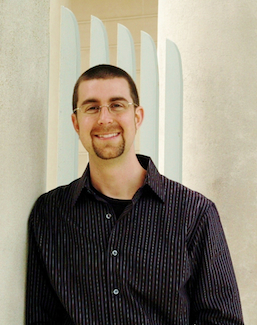Contrary to expectations, life experiences better use of money than material items
Study shows shoppers might buy material items because of mistaken belief they provide more value
April 2, 2014 -- Despite knowing that buying life experiences will make them happier than buying material items, shoppers might continue to spend money on the latter because they mistakenly believe items are a better value, according to a San Francisco State University study published today. That belief, however, isn’t accurate.
Those surveyed after making a purchase rated life experiences both making them happier and as a better use of their money, indicating many are sacrificing their well-being for a sense of value that never materializes. The study is one of the first to shed light on why people buy material items even though years of research has shown experiences provide a greater happiness boost.

Associate Professor of Psychology Ryan Howell
"People actually do know, and accurately predict, that life experiences will make them happier," said SF State Associate Professor of Psychology Ryan Howell, a co-author of the study who has extensively researched the link between spending and happiness. "What they really underestimate is how much monetary value they will get out of a life experience. Even though they're told experiences will make them happier and they know experiences will make them happier, they still perceive material items as being a better value."
Part of the reason, Howell suggests, is that material items are a tangible reminder of what the item is worth. Life experiences produce only memories, which can be harder to put a price tag on.
"We naturally associate economic value with stuff. I bought this car, it's worth $8,000," he said. "We have a hard time estimating the economic value we would place on our memories."
To conduct the study, Howell and lead author Paulina Pchelin, a student at SF State when the research took place, surveyed individuals both before and after making a purchase. Prior to the purchase, respondents said they believed a life experience would make them happier but a material item would be a better use of their money. After the purchase, however, respondents reported that life experiences not only made them happier but were also the better value.
"There were just huge underestimates in how much value people expected to get from their purchase," Howell said. "It's almost like people feel they will get no economic value from their life experiences and therefore they feel this tension in spending money on them."
Adjusting an individual's priorities, the study showed, can change spending behavior. In an additional experiment, those asked to prioritize value when making a purchase gravitated toward material items, while those asked to prioritize happiness chose experiences.
Determining the best way to encourage the general public to prioritize happiness over value will require additional research, Howell said. The implications, however, extend far beyond the realm of psychology or even retail.
"Happiness is not some fleeting, positive emotion we experience in the moment," he said. "There are tremendous benefits to happiness. Companies want their employers to be happier because they are more productive. Doctors want their patients to be happier because they will be healthier. We should try to figure out how to help people maximize their happiness because of all the benefits that come from it." As next step, Howell is inviting people to forecast their happiness from consumer items by taking part in studies on his website BeyondThePurchase.Org.
"The Hidden Cost of Value-seeking: People do not Accurately Forecast the Economic Benefits of Experiential Purchases," by Paulina Pchelin and Ryan Howell, was published online April 2 in the Journal of Positive Psychology and is available to read online at http://www.tandfonline.com/doi/full/10.1080/17439760.2014.898316#.UzlzdKhdX-I
###
SF State is the only master's-level public university serving the counties of San Francisco, San Mateo and Marin. The University enrolls nearly 30,000 students each year and offers nationally acclaimed programs in a range of fields -- from creative writing, cinema and biology to history, broadcast and electronic communication arts, theatre arts and ethnic studies. The University’s more than 219,000 graduates have contributed to the economic, cultural and civic fabric of San Francisco and beyond.